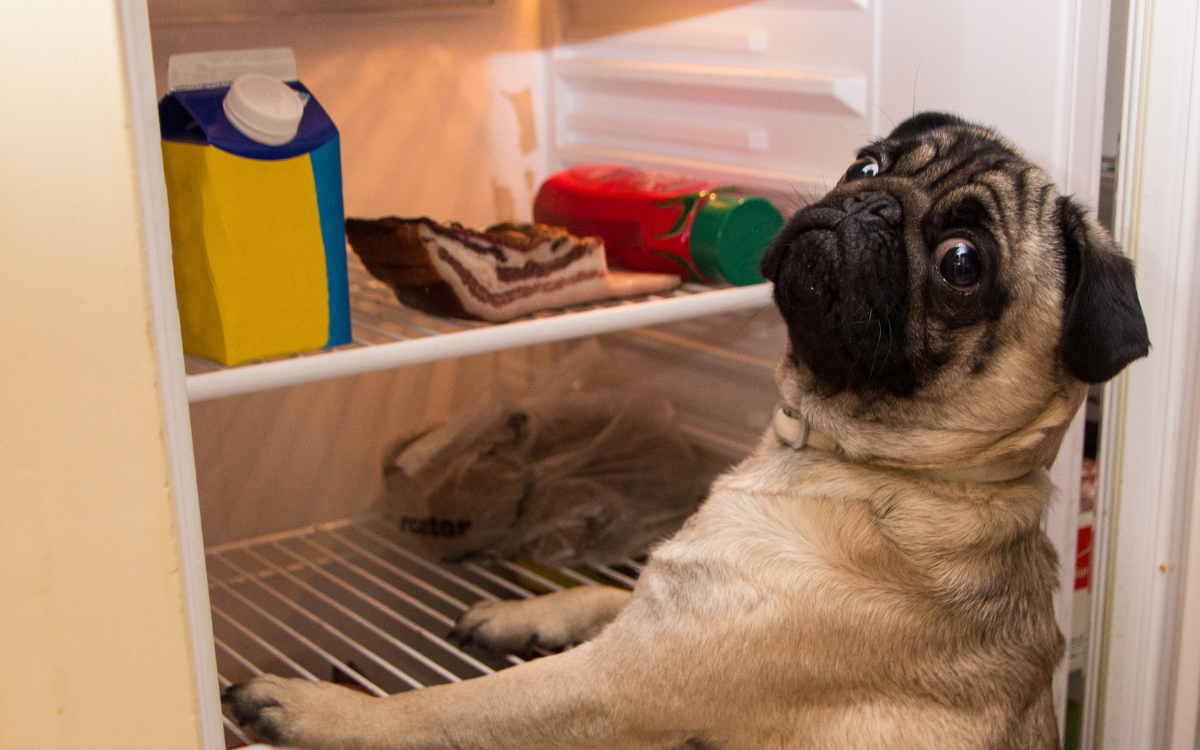For Pups With Short Attention Spans…
Canine conjunctivitis describes inflammation of the tissue surrounding the eye of your dog. In dogs it’s not usually caused by pink-eye, instead being caused by trauma, allergies, dry eye, or eye abnormalities. It’s always good to get your pup’s condition assessed by a vet, but in the interim period, a sterile eye flush or warm compress can relieve your dog’s discomfort.
A beautiful, expressive pair of puppy dog eyes is quite possibly one of the cutest things on the planet – which is part of what makes canine eye conditions so tragic! If you’re worried your dog might have an eye infection, don’t worry: we’ve got all the information you need to make the best plan of action for your dog.


What Is Canine Conjunctivitis (a.k.a. an Eye Infection)?
Conjunctivitis is the medical term for inflammation of the tissue surrounding the eye (the conjunctiva), and has multiple causes. We’ll focus on bacterial conjunctivitis today. The classic symptoms of bacterial conjunctivitis is red eyes with white, yellow, or green eye discharge1. Many dogs will hold their eyes partially or completely closed, and some may be unable to open their eyes – especially right after waking up.
A quick PSA: never use human eye medications on dogs unless instructed by your veterinarian. Some human meds can cause serious damage to your dog’s eye.
Does My Dog Have Pink Eye?
Most people are familiar with the symptoms of pink eye in humans: red, swollen eyes and large amounts of discharge. While the type of eye infections that cause pink eye is relatively common in humans, it’s unusual in dogs. If you notice “pink eye”-type symptoms with your dog, it most often indicates a deeper issue with their eye that’s making it easier for them to get infections.
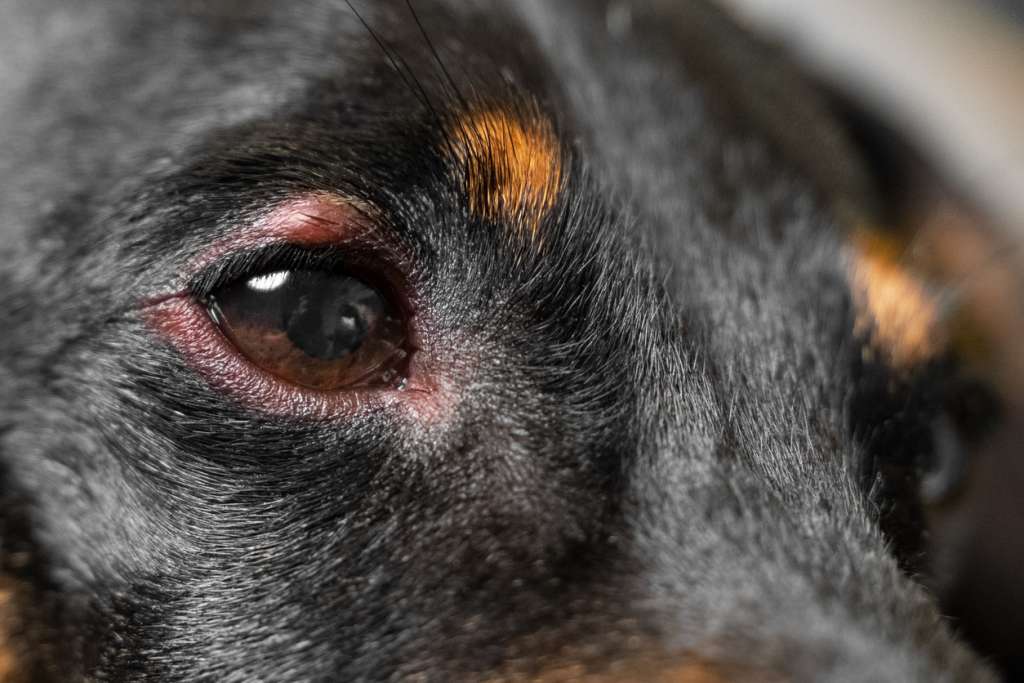

Fun fact! Dogs have a third eyelid, between the lower eyelid and the eyeball (you’ll often see it emerging from the inner corner of the eye). This can become very red, swollen and elevated (meaning the eyeball is hidden behind it) and may even look like a mass if your dog’s eye is irritated. This is a normal structure, and can be affected by anything affecting the eye.
If “Pink Eye” Infections are Not Common in Dogs, What Causes Canine Conjunctivitis?
While it’s true the plain eye infections that would cause “pink eye” are uncommon in dogs, there are many other causes of conjunctivitis to watch out for:
Trauma to the eye: Any injury to the eye creates the opportunity for an infection to develop in the damaged tissue.
Atopy (allergies): Both environmental and food allergies can cause inflammation and irritation to the eye, increasing the risk of infections2.
KCS (dry eye): This occurs when the eye doesn’t produce the normal amount of tears to keep the eyes healthy and lubricated.
Eyelid malformations: The eyelids can develop with the edge rolling in, out, or sagging. The eyelids are shields to the eye, so when they are not formed properly, the eye is not well-protected. This is classic in our smush-faced dogs (brachycephalic).
Eyelash abnormalities: Abnormal eyelash location and growth pattern can result in eyelashes growing in towards the eye, causing trauma, or growing in orientations that prevents the eyelash from protecting the eye normally.
My Dog Looks Miserable! What Can I Do?
If your vet is able to get you in today, just wait for them to assess the eye. While your pup may look miserable, you need to leave the eye alone so your veterinarian can give a diagnosis. If you have to wait for the next day or two, warm compresses of the eye and eye flushing can help with the discomfort.
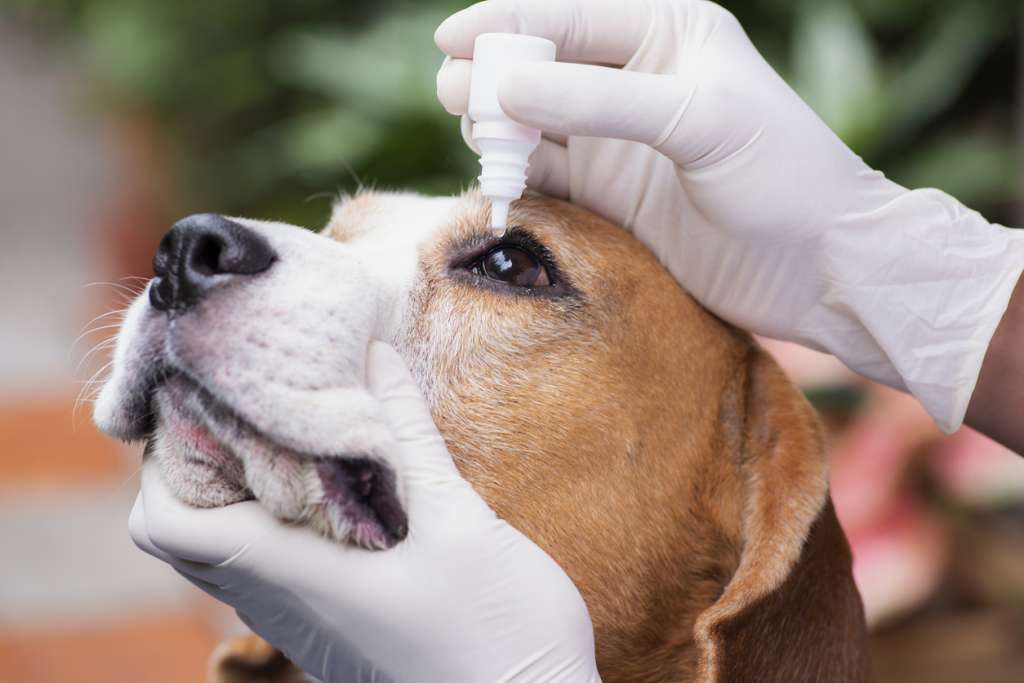

To warm compress, take a towel (disposable may be best if the eye is very goopy) and soak with hot running water. Ring the towel out so water is not dripping out. The towel should be a comfortable temperature for you to hold it on your own face for a long period. When in doubt, too cold is better than too hot. Hold the towel over the eye (or eyes) for up to 10 minutes if your pup allows it. Then gently wipe away discharge as long as it is not causing your pet pain. You may even notice it is easier for your dog to open their eyes when you are done.
Flushing the eye using sterile saline eye flush can be helpful if your pet will tolerate it. Do not fight them on this. Sometimes dogs just don’t like it, sometimes there is debris in the eye moving around causing more irritation. If your pup doesn’t like it, skip it until your veterinarian confirms it’s okay to continue with mild protest. Importantly, the flush should contain only sterile saline eye flush with no other ingredients. Many over-the-counter eye flushes marketed to people contain other ingredients that may harm your dog’s eye. Don’t risk it!
If your pet is rubbing their eye with their paws or against furniture (“face surfing”), putting a cone of shame on is recommended. I know no one likes these, but we’re talking about eyes here: your dog’s vision is at risk. Protecting their ability to see is worth a little annoyance.
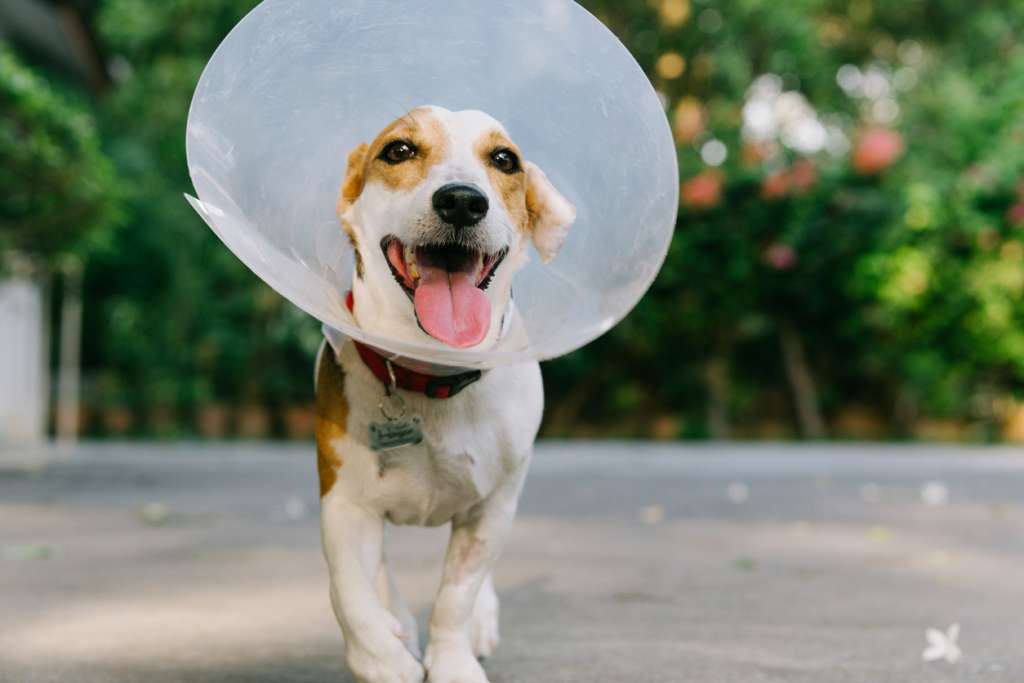

How Should I Administer Eye Medication?
Ideally, two people should work together to help administer eye medication: one person to hold the pet still and the other to administer the medication. But don’t worry: if you don’t have the help of an additional person, you can still administer eye medications. Place your dog on a leash and find a corner in your house that is clear of furniture and anything on the ground. Stand with your back to the corner, using the wall slightly for support, with your legs slightly wider than shoulder width apart. Encourage your dog to come and sit between your legs facing away from the wall. With your non-dominant hand, gently hold your dog’s muzzle so their nose is pointed slightly towards the ceiling. This leaves your dominant hand free to give the medications.
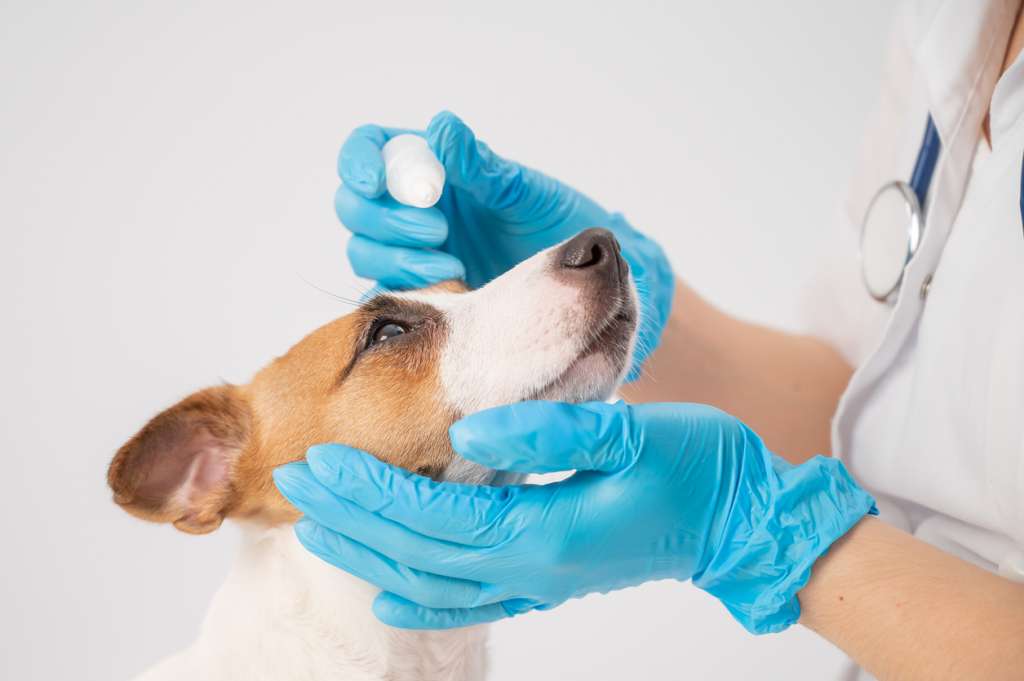

If you are giving eye drops, use your dominant hand to hold the bottle between your thumb and forefinger, with the opening pointed down. Rest the base of your thumb on the top eyelid, and gently pull back towards the ear. This will keep the eye open to allow you to administer drops. Careful not to touch the bottle to the eye: this can damage the cornea and contaminate the bottle.
If you are giving eye ointment, place the recommended amount on your index finger. Gently roll the lower eyelid down and out with your middle finger. Wipe the ointment on the eye side of the lower eyelid and release the eyelid. The eyelid will spread the ointment on the eye.
Bottom line: if your pet has a red, goopy, crusty eye, there is a good chance they have an eye infection, but most likely some other issues caused it. Your vet will help you get to the bottom of both and get you the correct treatment. Do your vet a favor and leave the eye alone the day of your appointment, unless they give you specific instructions to the contrary. If your dog was bothering their eye, the cone of shame can stay on right up until the appointment.
Colleen Ferriman, DVM, is a canine and feline health, wellness, and illness management advocate. She has a combined 10 years of experience in clinical medicine, education, and educational content development. Colleen graduated from Colorado State University as a Doctor of Veterinary Medicine, has worked as a general practitioner, and has contributed to the development of veterinary educational tools. She is also a member of the American Veterinary Medical Association and American Academy of Veterinary Pharmacology and Therapeutics.
Sources:
1Church ML: Conjunctivitis, Bacterial (Canine). VINcyclopedia of Disease 2021. https://www.vin.com/doc/?id=4953134&pid=607
2Church ML: Conjunctivitis, Allergic (Canine). VINcyclopedia of Disease 2021. https://www.vin.com/doc/?id=4953135&pid=607



